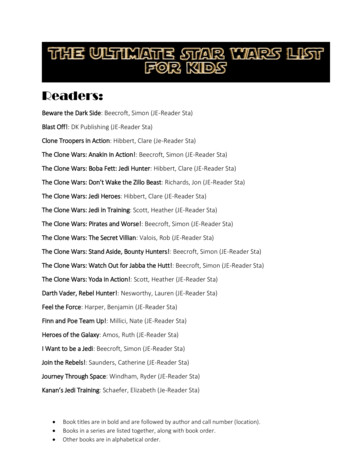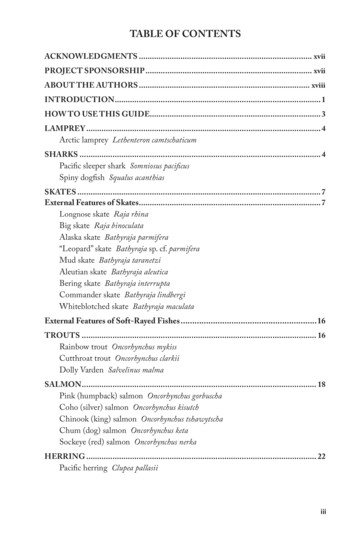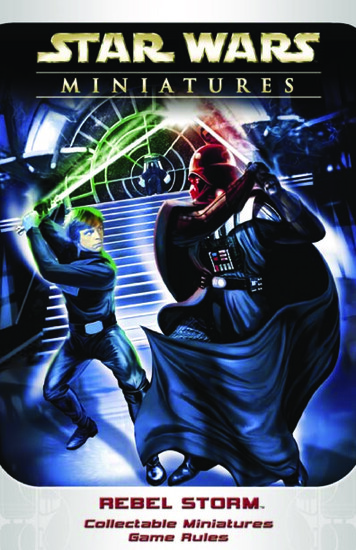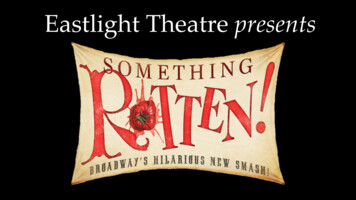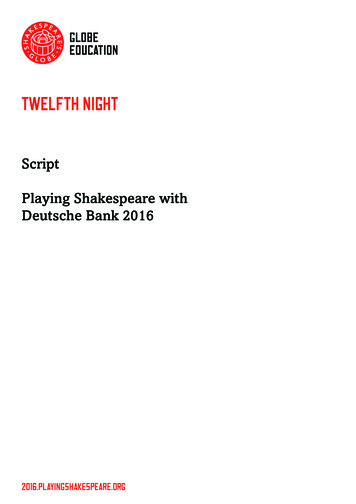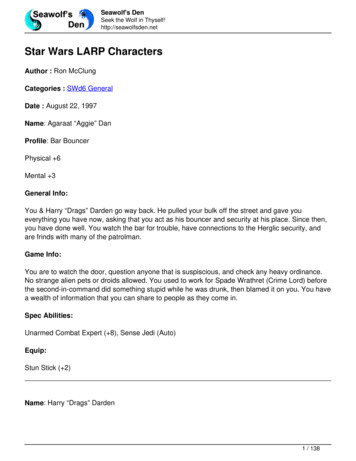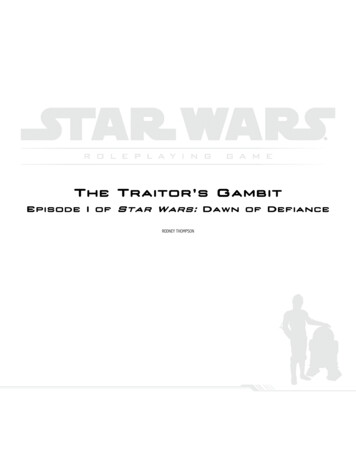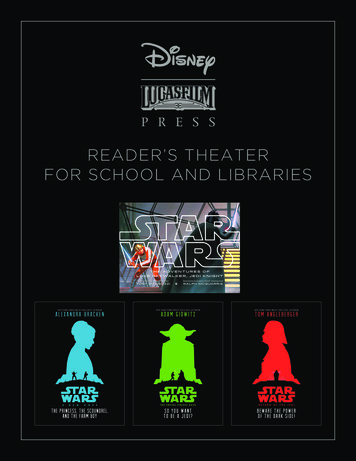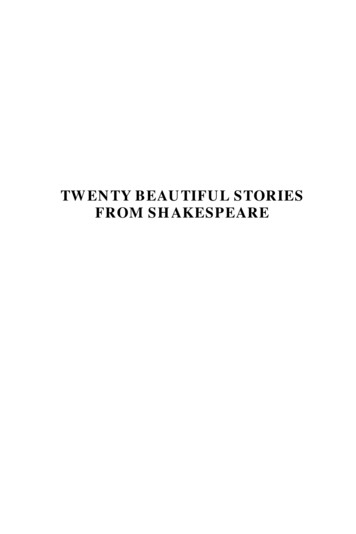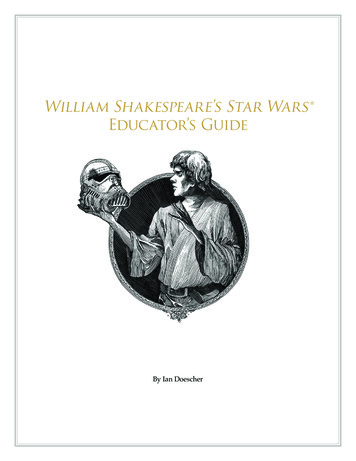
Transcription
William Shakespeare’s Star Wars Educator’s GuideBy Ian Doescher1
INTRODUCTIONLike the Star Wars movies, William Shakespeare’s plays are full of great stories and engaging characters.I picked up my first copy of Hamlet in the eighth grade, because my brother Erik was reading the playas a senior in high school. I was hooked on Shakespeare from the start—and I hope you will be too.This guide offers a brief introduction to Shakespeare and the elements that William Shakespeare’s StarWars has in common with his plays.Let’s start with the basics. Here are some quick and easy elements you’ll find in Shakespeare’s plays,all of which can be found in William Shakespeare’s Star Wars : Each play is in five acts. This was the usual structure of plays in Shakespeare’s time, whichdrew on the earlier tradition of ancient Roman plays, many of which also had five acts. Therecan be any number of scenes within each act. When you are referring to a specific act, scene,and line from that scene, the typical convention for Shakespeare is something like II.iii.45—which means Act 2 (represented by II, the upper case roman numerals), scene 3 (representedby iii, the lower case roman numerals), line 45. I use the same references for lines in WilliamShakespeare’s Star Wars . Minimal stage directions. Shakespeare left it to his plays’ performers to determine whoshould do what on stage. Rhyming couplets at the end of scenes. A couplet is two adjacent lines of verse that rhymewith each other, like “Thou must hold with thy conscience, it is true, / Whate’er thou thinkestright, thus thou shouldst do.” Shakespeare often ended his scenes with a rhyming couplet asa simple way to mark a narrative shift, similar to a final cadence in music. I followed theconvention in William Shakespeare’s Star Wars . Language that is meant to be spoken, not just read! Shakespeare wrote his plays to beperformed by actors he knew in local London theaters. They were not at first intended to beput in a book and assigned as reading, though that’s how most modern students firstencounter Shakespeare. If you are trying to make it through a Shakespeare play for the firsttime, gather around with some friends and read the play out loud together. The words willmake more sense when you hear their rhythm and their cadence. You’ll get less caught upin the old-fashioned language and more engaged by in the quick and witty dialogue,beautiful metaphors and clever jokes. Characters sometimes have “asides.” An aside is a line spoken so the audience can hear butthe other characters on stage (supposedly) cannot. Often, an aside explains a character’smotivations or inner thoughts, or a background situation the audience wouldn’t otherwiseknow. These days an aside in theater is sometimes called breaking “the fourth wall,” thatis, the imaginary divide between stage and audience. Asides in Shakespeare tend to be fairlyshort, though not always. Characters also make long speeches by themselves, known as soliloquies. They are similarto asides in that they often explain why a character is acting the way s/he is, but they occurwhen the character is alone on stage. In general, soliloquies are longer than asides.(The longest soliloquy by a Shakespearean character is 63 lines, spoken by the characterCanterbury in Act 1, scene 2 of Henry V.)2
THE LANGUAGEShakespeare’s old-fashioned language can be one of the hardest hurdles to jump when you’re gettingstarted. Here are some things to know about the language of Shakespeare’s time.Shakespeare wrote in iambic pentameter, which is a line of poetry with a very specific syllabic pattern.An “iamb” has two syllables—the first is unstressed (or soft) and the second is stressed(or emphasized). An iamb sounds like da-DUM, as in the following words:Result (re-SULT)Enjoy (en-JOY)Below (be-LOW)Belief (be-LIEF)Pursue (pur-SUE)Beru (be-RU)“Pentameter” means there should be five iambs in a line, so iambic pentameter is a line of ten syllables:da-DUM da-DUM da-DUM da-DUM da-DUM. Here’s a classic line, with the unstressed part of eachiamb in regular text and the stressed part of each iamb in bold: “I’d rather be a hammer than a nail.”So, in other words, the five iambs in this line are (1) I’d RATH- (2) er BE (3) a HAM- (4) mer THAN (5) aNAIL. (When I was in high school, my English teacher Jane Bidwell had to convince me that words like“nail” or “tale” only have one syllable. After all these years, I finally believe her.)Shakespeare uses iambic pentameter for most of his characters most of the time, but it also has anelement of class to it. In other words, most of Shakespeare’s characters speak in iambic pentameter,but some speak in prose (normal speech) when Shakespeare wanted to set them apart as lower class.Dogberry in Much Ado About Nothing is a textbook example.Shakespeare also sometimes breaks the rules of iambic pentameter. The most famous Shakespeareanline of all actually has eleven syllables: “To be or not to be, that is the question.” That last “-ion” isknown as a weak ending, and is common in Shakespeare. It’s also common that he will slip twounstressed syllables into a space where there should be just one, or he’ll leave out a syllable entirely.As much as we associate Shakespeare with iambic pentameter, he broke the rule almost as much as heobserved it. By comparison, William Shakespeare’s Star Wars uses much stricter iambic pentameter thanShakespeare himself used. I kept rigidly to ten-syllable lines as I wrote—I didn’t want to be accusedof laziness! There are maybe a dozen lines in William Shakespeare’s Star Wars that don’t conform to theiambic pentameter pattern. Can you find them?The final—and maybe most important—thing to say about iambic pentameter is that it’s one of thosethings you should know about and then not be too worried about. If the whole idea of meter andstressed and unstressed syllables leaves you feeling stressed, just read Shakespeare’s lines out loud andforget about the meter. Pay attention to the punctuation, and let it guide your pauses. Whatever youdo, don’t feel that you have to pause at the end of each line of Shakespeare. Unless there is a comma,a period or some other punctuation—or some other break in the meaning—each line should followimmediately after the preceding line.3
Here are some lines from William Shakespeare’s Star Wars (I.ii.4-14), followed by some things to notice:Darth Vader:Thou speakest well, my stormtrooper, and yetNot well upon my ear the message falls.I turn to thee, thou rebel. Aye, I liftThy head above my own. Thou canst now chooseTo keep thy secrets lock’d safe in that head,And therefore lose the life thou holdest dear,Or else to keep thy head and, thus, thy life.My patience runneth quickly out much likeThe sands across the dunes of Tatooine.So tell me, else thou diest quick: where shallWe find transmissions thou didst intercept?What hast thou done, say, with those plans?This speech of Darth Vader’s—his first lines of the movie and the book—illustrates a few different points: First, as noted above, the punctuation should guide how you say these lines, not the actualends of the lines themselves. Obviously, in lines 6-7, “I lift thy head above my own” is a singlethought that just happens to be split across two lines. Five of the twelve lines in this speechdon’t end with any punctuation, so they should roll right into the next line. All twelve of these lines follow the rules and rhythm of iambic pentameter, but I think youcan hear it clearest in line 5: “Not well upon my ear the message falls.” Not well upon my earthe message falls. Got it? You may be wondering: what happens if a word has more than two syllables, since an iamb callsfor only one stressed syllable? Are you saying that every word in the English language reallyonly has a single syllable emphasized? Those are important questions. When it comes to multisyllabic words, you have to figure out, first, which syllable has the main emphasis. Here arethree examples of three-syllable words, and each with an emphasis on a different syllable:Stormtrooper (emphasis on first syllable)Transmissions (emphasis on second syllable)Tatooine (emphasis on final syllable)This can get even trickier with four- and five-syllable words. The basic pattern in most wordsis that you figure out which syllable should be emphasized, and then see if another syllablehas a minor emphasis. The word Imperial is a good example. The main emphasis is on thesecond syllable, Imperial. In iambic pentameter, it makes sense for the first iamb to be Imperand the next iamb to be ial. So “al” at the end of the word Imperial has a secondary stressthat fits the meter nicely. (To give you an idea of how these decisions are made if you readcarefully you’ll notice that throughout William Shakespeare Star Wars I use the wordstormtrooper as if the emphasis is in the middle—stormtrooper. I did this mostly becausestormtrooper is a challenging word. It’s a compound word, and if you break it into two wordsit has two stressed syllables at the front—storm trooper. To put it in iambic pentameter eithermeans stressing the middle syllable as I did—stormtrooper—or making the “er” on the end asecondary emphasis syllable—stormtrooper. That second option sounded wrong to my ear,so I took a liberty with the emphasis in the word.)4
All those –est and –eth endings. When I started writing William Shakespeare’s Star Wars ,I had a rough idea from reading Shakespeare when the –est ending on a verb was used, andwhen the –eth ending was used. But it wasn’t until my college English professor, good friendand Shakespeare scholar Murray Biggs, read the manuscript that I learned the actual rules (heset me straight more than once or twice). In general, the –est ending happens when you areusing the pronoun “thou”: “Thou speakest” and “thou holdest” in the speech above, referringto a singular “you.” The –eth ending is used for “he” or “she” or a neutral (but alwayssingular) “it”: “patience runneth” in Vader’s speech. You’ll often see words that would normally end in –ed, like the word “locked,” spelled inShakespeare as “lock’d” (as in the speech above). The reason these words are printed this wayis that in Shakespeare’s time, the –ed was sometimes actually pronounced, so instead ofpronouncing the word “locked” as “lockt” (as we do now), they would have pronounced itin two syllables, “lock-ked.” When such a word was to be shortened because of the meter, theword was turned into a contraction, “lock’d.” Often, in modern editions of Shakespeare—andin William Shakespeare’s Star Wars —if there’s a word ending in –ed that is supposed to havethe –ed pronounced as a separate syllable, it will appear with an accent over the e: “lockèd.” On thees and thous:thou you (as the subject of a sentence, like “thou speakest”)thee you (as the object or of a sentence, like “give it to thee”)thy your (before a word starting with a consonant, like “thy life”)thine your (before a word starting with a vowel, like “thine attitude”)ye you (as the subject of a sentence for more than one person, like “ye people”)A final note about Shakespeare and language: when in doubt, look up words you don’t know and evenwrite their definitions in the text next to them if it helps. Most good Shakespeare editions havefootnotes that explain unusual words (like “fardels”) or a glossary of terms at the end. This will helpyou when even reading the text aloud doesn’t do the trick.SHAKESPEAREAN REFERENCES INWILLIAM SHAKESPEARE’S STAR WARS Some good news: if you have read William Shakespeare’s Star Wars , you’ve already read someShakespeare. Not much, but it’s better than nothing. William Shakespeare’s Star Wars makes directreference to several lines in Shakespeare’s plays. Here’s a guide to where you can find Shakespeareanreferences in a galaxy far, far away.Henry VThe overall structure of William Shakespeare’s Star Wars is probably most similar to the history playThe Life of Henry the Fifth (more briefly known as Henry V). Henry V has a grand story to tell—theEnglish defeat of the French in famed battles such as Harfleur and Agincourt, and King Henry V’s riseto power over two kingdoms. But how could such a sweeping tale be told on a small stage, in the daysbefore movies or computer animation? Shakespeare handles this by using a Chorus. The dramaticdevice of a Chorus—which goes back at least to early Greek drama—is a narrating character who is not5
involved in the action and is voiced either by a single person or by a group. The Chorus helps explainwhat is happening, particularly when the action is too grand to be depicted literally on the stage.When I began writing William Shakespeare’s Star Wars , I was faced with a dilemma: how do you showthe action of Star Wars in a play with minimal staging opportunities? I decided early on to take a pagefrom Shakespeare and add a Chorus to the play, to explain the visual elements that a theater audiencewouldn’t necessarily be able to see. In that way, my Chorus functions in the same way as Shakespeare’sChorus in Henry V. I decided—just for the challenge and the fun of it—to have my Chorus speak inrhyming sets of four lines called “quatrains” (with lines 1 and 3 rhyming and lines 2 and 4 rhyming).Shakespeare doesn’t go quite that far!Great film version: Kenneth Branagh starred in and directed the 1989 film version of Henry V, withDerek Jacobi as the Chorus.HENRY VPrologue, 1-34O for a Muse of fire, that would ascendThe brightest heaven of invention!A kingdom for a stage, princes to act,And monarchs to behold the swelling scene!Then should the warlike Harry, like himself,Assume the port of Mars, and at his heels(Leash’d in, like hounds) should famine, sword,and fireCrouch for employment. But pardon, gentles all,The flat unraised spirits that hath dar’dOn this unworthy scaffold to bring forthSo great an object. Can this cockpit holdThe vasty fields of France? Or may we cramWithin this wooden O the very casquesThat did affright the air at Agincourt?O, pardon! since a crooked figure mayAttest in little place a million,And let us, ciphers to this great accompt,On your imaginary forces work.Suppose within the girdle of these wallsAre now confin’d two mighty monarchies,Whose high, upreared, and abutting frontsThe perilous narrow ocean parts asunder.Piece out our imperfections with your thoughts;Into a thousand parts divide one man,And make imaginary puissance;Think, when we talk of horses, that you see themPrinting their proud hoofs i’th’receiving earth;For ‘tis your thoughts that now must deckour kings,Carry them here and there, jumping o’er times,Turning th’accomplishment of many yearsInto an hour-glass: for the which supply,Admit me Chorus to this history;Who, Prologue-like, your humble patience pray,Gently to hear, kindly to judge, our play.6WILLIAM SHAKESPEARE’S STAR WARS V.v.1-12Chorus:As our scene shifts to space, so deep and dark,O’er your imagination we’ll hold sway.For neither players nor the stage can markThe great and mighty scene they must portray.We ask you, let your keen mind’s eye be chief—Think when we talk of starships, there they be.If you can soon suspend thy disbelief,The Death Star battle shall you plainly see!So now: the preparation made with care,Toward the Death Star rides the noble fleet.By whirr of engines rebels take the air,With courage strong their unknown Fateto meet.
At two points in Henry V, the king makes a stirring speech to his troops to invigorate them for battle.One of these is his speech before the battle of Agincourt, where the English were far outnumbered bythe French, to say nothing of being weary from weeks of battle and travel. I put echoes of these stirringspeeches into Luke Skywalker’s mouth as he encourages his rebel friends.HENRY VIV.iii.20-23, 64-67Henry V:If we are mark’d to die, we are enowTo do our country loss; and if to liveThe fewer men, the greater share of honor.God’s will, I pray thee wish not one man more. And gentlemen in England, now a-bed,Shall think themselves accurs’d they were not here;And hold their manhoods cheap whilesany speaksThat fought with us upon Saint Crispin’s Day.WILLIAM SHAKESPEARE’S STAR WARS V.iv.66-69, 101-104Luke:Wish not we had a single fighter more,If we are mark’d to die, we are enoughTo make our planets proud. But should we win,We fewer rebels share the greater fame. And citizens in Bespin now abed,Shall think themselves accurs’d they were not here.For never shall Rebellion see a timeMore glori’us than our strong attack today!Henry V’s speech during the battle of Harfleur (earlier in the play than Agincourt) encourages his mento keep up the siege of the city and win the day. That speech begins with a famous line of Henry’s(III.i.1, below). I used almost the same line for Luke’s encouragement of Biggs and Wedge as theyapproach to take on the Death Star one final time. But I also draw on Henry V’s Agincourt speech (IV.iii.60) and the moment when—after the English victory at Agincourt—King Henry realizes that duringthe battle the boys who traveled with the army have been slaughtered: “I was not angry since I came toFrance / Until this instant.”HENRY VIII.i.1Henry V:Once more unto the breach, dear friends, once more IV.vii.55-56Henry V:I was not angry since I came to FranceUntil this instant.IV.iii.60Henry V:We few, we happy few, we band of brothersWILLIAM SHAKESPEARE’S STAR WARS V.v.331, 334-335, 350-351Luke:Once more unto the trench, dear friends, once more! I was not angry since I came to spaceUntil this instant! We three, we happy three, we band of brothers,Shall fly unto the trench with throttles full!7
Richard IIIThe Tragedy of Richard III is part history and part tragedy. The play tells the story of Richard of Gloucester,an obsessively ambitious man whose deceptions and bloodlust put him on the throne as Richard III(and leaves him with no one to trust once he is there). Great film versions: Looking for Richard, which ishalf film and half documentary by Al Pacino about how to approach the play and Shakespeare in general.Also, Ian McKellen in the 1995 film of Richard III.The first lines of William Shakespeare’s Star Wars (not counting the opening prologue) plays off the firstlines of Richard III:RICHARD IIII.i.1-2Richard:Now is the winter of our discontentMade glorious summer by this son of York WILLIAM SHAKESPEARE’S STAR WARS I.i.1-12C-3PO:Now is the summer of our happinessMade winter by this sudden, fierce attack!Toward the end of Richard III, the king is on a battlefield about to lose the battle (plus his kingdom, andhis life) to the Earl of Richmond, who will become King Henry VII. It’s during that final battle thatRichard utters the famous line, “A horse, a horse! my kingdom for a horse!” The rebel general Dodonnamakes reference to this situation, in the only direct reference to the plot of a Shakespeare play by acharacter in William Shakespeare’s Star Wars :RICHARD IIIV.iv.7Richard:A horse, a horse! my kingdom for a horse!WILLIAM SHAKESPEARE’S STAR WARS V.iv.30-31Dodonna:But like the king who fell for want of horseThis station may be crush’d by smaller might.King LearThe Tragedy of King Lear is the story of an old king who tries to divide his kingdom among his threedaughters. In the opening scene, his first two daughters Goneril and Regan—who turn out to be rotten—give him the ego-stroking he craves before he grants them their inheritance. But his good, youngestdaughter, Cordelia, refuses to lavish praise on Lear just to receive her part of the kingdom. Lear, in hisrage, sends her into exile and splits his kingdom into two parts for Goneril and Regan instead of three.Thus begins the tragedy, which ends with Lear’s madness and death (not to mention the death of all ofhis daughters and a handful of other people). Great film version: Laurence Olivier played King Learin the 1983 BBC version. The cast and crew were in tears as they watched Olivier perform Lear’s deathscene, because Olivier himself was old and unwell.One of King Lear’s most memorable characters is the Fool, a jester-like figure whose job is to entertainthe king. However, the Fool is more than just a comedian—he tells truths no one else will utter or accept,words that few take seriously because he is a Fool. Shortly after Lucasfilm encouraged me to take someliberties with the original movie of Star Wars, I had the idea to make R2-D2 a Shakespearean fool in thetradition of King Lear. R2 bursts into English when he’s alone or speaking an aside.8
WILLIAM SHAKESPEARE’S STAR WARS I.ii.56-68R2-D2:This golden droid has been a friend, ‘tis true,And yet I wish to still his prating tongue!An imp, he calleth me? I’ll be reveng’d,And merry pranks aplenty I shall playUpon this pompous droid C-3PO!Yet not in language shall my pranks be done:Around both humans and the droids I mustBe seen to make such errant beeps and squeaksThat they shall think me simple. Truly, though,Although with sounds oblique I speak to them,I clearly see how I shall play my part,And how a vast Rebellion shall succeedBy wit and wisdom of a simple droid.At one point, when King Lear has been staying in the house of Goneril, he announces that he and hishundred knights will now be staying with Regan. His daughters tell him that neither of them isprepared to continue taking care of his entourage. This is one of Lear’s early signs that his daughtersdon’t love him as much as they professed to at the beginning of the play. Goneril and Regan finallyask him why he needs even fifty men, or twenty-five, or even ten, five or one. He blurts out “O, reasonnot the need.” In other words—don’t ask why! Luke tells himself the same thing when he starts to askhimself whether the rebellion is worth its price in human life.THE TRAGEDY OF KING LEARII.iv.264King Lear:O, reason not the need WILLIAM SHAKESPEARE’S STAR WARS V.v.268Luke:Thus reason not the need, my troubl’d soul.HamletThe Tragedy of Hamlet, Prince of Denmark is Shakespeare’s most famous play. It’s also the play I make themost references to in William Shakespeare’s Star Wars . The work tells the story of Hamlet, the Prince ofDenmark, whose father has died and whose mother Gertrude has married his uncle Claudius (Hamlet’sfather’s brother). In the opening scenes, the Ghost of King Hamlet returns to tell Hamlet that he wasactually murdered by his brother, so that his brother could marry Hamlet’s mother and take the throne.The tragedy unfolds as Hamlet tries to figure out the best way to avenge his father. Great film versions:Kenneth Branagh’s 1996 version is good if you want to see Hamlet played sane, Mel Gibson’s 1990version is good if you want to see Hamlet played mad (I prefer Branagh’s take).From the start of the play—even before Hamlet learns of his father’s murder—Hamlet is upset withGertrude and expresses his unhappiness at her hasty marriage to his uncle Claudius. Gertrude tellsHamlet it is natural for people to die, and asks why his father’s death seems so particular. I hadObi-Wan echo Hamlet’s response.9
HAMLET, PRINCE OF DENMARKI.ii.76Hamlet:Seems, madam? nay, it is, I know not “seems.”WILLIAM SHAKESPEARE’S STAR WARS III.vi.102Obi-Wan:Seems, young one? Nay, thou didst!Think thou not seems.Later in the same scene, in his first soliloquy, Hamlet expresses just how angry he is that his mother hasremarried so quickly. He says, famously, “Frailty, thy name is woman!” I decided that Luke, gettingshocked by the remote as he begins his Jedi training inside the Millennium Falcon, might think somethingsimilar about the Force.HAMLET, PRINCE OF DENMARKI.ii.146Hamlet:Let me not think on’t! Frailty, thy name is woman!WILLIAM SHAKESPEARE’S STAR WARS III.vi.52Luke:Aye: frailty, thy name—belike—is Force.It made most sense to describe Obi-Wan’s voice (when he speaks to Luke after being killed by DarthVader) as an entrance of his ghost. Like Hamlet’s father, Obi-Wan bids Luke to remember him.HAMLET, PRINCE OF DENMARKI.v.91Ghost:Adieu, adieu, adieu! remember me.WILLIAM SHAKESPEARE’S STAR WARS V.v.427Ghost of Obi-Wan:Remember me, O Luke, remember me,“To be or not to be, that is the question,” is, as I indicated above, probably Shakespeare’s most famousline. It begins Hamlet’s soliloquy in Act III, in which he questions what is useful about life and whyhuman beings don’t just kill themselves, given how hard life is. He then realizes it is the fear of whatmay come after death—“the undiscover’d country”—that makes people prefer to stay alive and dealwith their troubles on earth rather than die and take their chances on the afterlife. I used several wellknown lines from the “To be or not to be” speech in William Shakespeare’s Star Wars . You can see thewhole speech below with the parts I referenced highlighted.HAMLET, PRINCE OF DENMARKIII.i.55-87Hamlet:To be, or not to be, that is the question:Whether ‘tis nobler in the mind to sufferThe slings and arrows of outrageous fortune,Or to take arms against a sea of troubles,And by opposing, end them. To die, to sleep—No more, and by a sleep to say we endThe heart-ache and the thousand natural shocksThat flesh is heir to; ‘tis a consummationDevoutly to be wish’d. To die, to sleep—To sleep, perchance to dream—ay, there’s the rub,For in that sleep of death what dreams may come,When we have shuffled off this mortal coil,Must give us pause; there’s the respect10WILLIAM SHAKESPEARE’S STAR WARS III.i.101Han Solo:Aye, there’s the rub, so shalt thou further pay.
That makes calamity of so long life:For who would bear the whips and scorns of time,Th’oppressor’s wrong, the proud man’s contumely,The pangs of despis’d love, the law’s delay,The insolence of office, and the spurnsThat patient merit of th’unworthy takes,When he himself might his quietus makeWith a bare bodkin; who would fardels bear,To grunt and sweat under a weary life,But that the dread of something after death,The undiscover’d country, from whose bournNo traveller returns, puzzles the will,And makes us rather bear those ills we have,Than fly to others that we know not of?Thus conscience does make cowards of us all,And thus the native hue of resolutionIs sicklied o’er with the pale cast of thought,And enterprises of great pitch and momentWith this regard their currents turn awry,And lose the name of action.II.i.49Luke:O, I shall taste the whips and scorns IV.vii.55-58Obi-Wan:And so, unto this death I’ll go, this sleep,This sleep that promises the dream of peace.This undiscover’d galaxy I.v.18-19C-3PO:Aye, rather would I bear the ill I have,Than fly to others that I know not of.After Hamlet kills Polonius, an advisor to his uncle Claudius (thinking perhaps he was killing Claudiushimself), Hamlet is sent by his uncle to England. When he returns, he and his friend Horatio comeacross two men digging graves. Hamlet notices one skull in particular, asks the gravedigger whose itwas, and learns that the skull is that of Yorick, a clown who amused Hamlet when he was a child.(Yorick is similar to the Fool in King Lear.) Hamlet holds up Yorick’s skull to look at it and speaks abouthis memories of Yorick. This is probably the image we associate most with Shakespeare—Hamletholding up a skull—and I couldn’t resist writing a similar moment for Luke.HAMLET, PRINCE OF DENMARKV.i.184-195Hamlet:Alas, poor Yorick! I knew him, Horatio, a fellowof infinite jest, of most excellent fancy. He hathbore me on his back a thousand times, and nowhow abhorr’d in my imagination it is! my gorgerises at it. Here hung those lips that I have kiss’dI know not how oft. Where be your gibes now,your gambols, your songs, your flashes ofmerriment, that were wont to set the table ona roar? Not one now to mock your own grinning—quite chop-fall’n. Now get you to my lady’schamber, and tell her, let her paint an inch thick,to this favor she must come; make her laugh at that.WILLIAM SHAKESPEARE’S STAR WARS IV.vi.1-9Luke:Alas, poor stormtrooper, I knew ye not,Yet have I ta’en both uniform and lifeFrom thee. What manner of a man wert thou?A man of inf’nite jest or cruelty?A man with helpmate and with children too?A man who hath his Empire serv’d with pride?A man, perhaps, who wish’d for perfect peace?Whate’er thou wert, good man, thy pardon grantUnto the one who took thy place: e’en me.11
The final action of the play occurs when Hamlet is challenged to a duel by Laertes, Polonius’ son andthe brother of Hamlet’s romantic interest Ophelia (who is also dead by now). Horatio warns Hamletagainst the duel, because Laertes is a skilled swordsman. Hamlet responds by saying, in essence, thathis time to die will come at some point, so it might as well be now—the main thing is to be ready forit. It’s the sort of line a person might say when preparing to meet her or his fate, as the rebels do whenfaced with the Death Star. (When I graduated from high school, I wrote “The readiness is all” on mygraduation cap. Yes, a little pretentious.)HAMLET, PRINCE OF DENMARKV.ii.220-222Hamlet:If it be now, ‘tis not to come; if it be not to come,it will be now; if it be not now, yet it will come—the readiness is all.WILLIAM SHAKESPEARE’S STAR WARS V.v.141-142Red Leader:The time is here, good men, ‘tis not to come:It will be now. The readiness is all.Hamlet and Laertes duel, and because this is a tragedy both of them are dead by the end, alongwith Claudius and Gertrude. Horatio, Hamlet’s friend, is one of the last left alive. He speaks of hisheartbreak at losing his friend. Luke expresses a similar heartbreak when he is told he won’t be ableto attend the Academy.HAMLET, PRINCE OF DENMARKV.ii.359Horatio:Now cracks a noble heart. Good night, sweet prince WILLIAM SHAKESPEARE’S STAR WARS I.vii.72Luke:Now cracks a hopeful heart MacbethThe title character of The Tragedy of Macbeth is a close companion and courtier of the Scottish KingDuncan. Macbeth is led via his own ambition, fortunetelling witches and a devious wife to murder theking. Macbeth is a play full of ghosts and witches and visions—it has a reputation among actors an
2 INTRODUCTION Like the Star Wars movies, William Shakespeare’s plays are full of great stories and engaging characters. I picked up my first copy of Hamlet in the eighth grade, because my brother Erik was reading the play as a senior in high school. I was hooked
